When first learning how to crochet, your mistakes will teach you valuable lessons that help you hone your crochet skills. The more mistakes you make, the quicker you will learn and gain some intuition on when to anticipate them and how to prevent them. This blog post gives you a heads up as to what mistakes you may encounter as you crochet. Without further ado, let’s dive into this blog post!
1) Not Crocheting Turning Chains
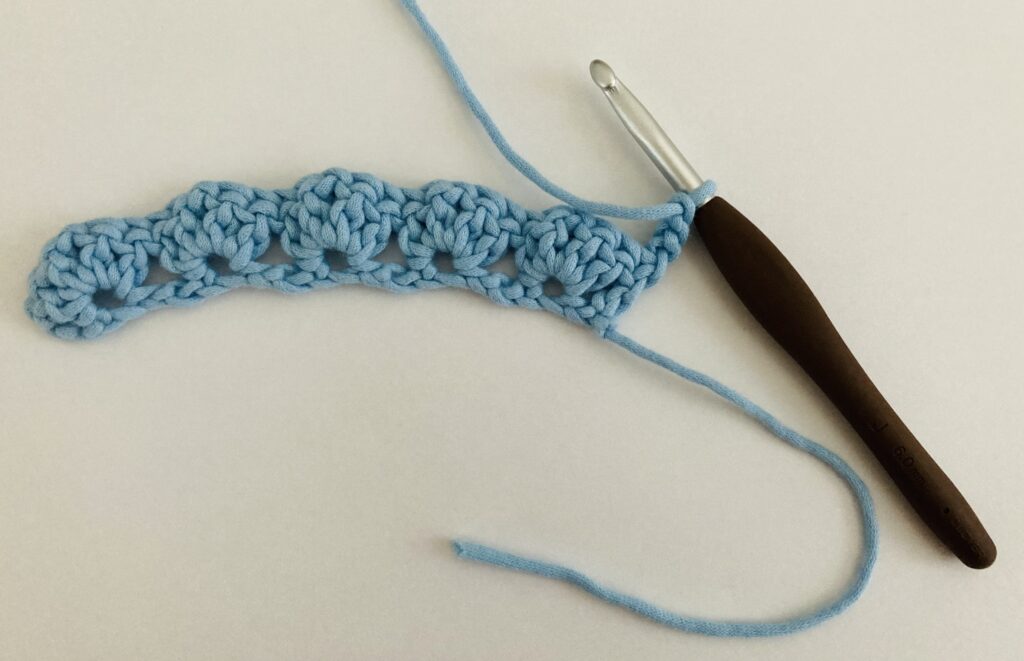
One issue many beginner crocheters may run into is not crocheting turning chains. A turning chain is a chain made at the end of the row before turning your work so that you can work more crochet stitches in the next row. In other words, the turning chain accommodates for the height of stitches in the next row so that when you crochet the next row, your stitches won’t be compressed around the edges. There is an alternative way to start rows without a turning chain as well, where you can pull up a loop on the side of your work that is the height of the stitches instead of crocheting a turning chain that is as tall as stitches. When you don’t use the technique to crochet a turning chain or a loop that is as tall as the stitches in the next row, you will run into problems with crocheting particular shapes. For instance, not crocheting a turning chain will cinch the edges of your work, while the stitches at the center of each row will be of a normal height.
2) Crocheting Stitches Too Tightly or Loosely
You may also run into some problems in your crochet projects if you crochet stitches too tightly or loosely. When crocheting stitches too tightly, you will have a hard time inserting your hook into stitches in the next row when the time comes to crochet new stitches in the next row. When you crochet too loosely, your work may have too much of a holey appearance, even when you don’t use a lacey stitch. This can happen if you are using a dense stitch like the Lemon Peel Stitch while crocheting too loosely. You can learn how to crochet the Lemon Peel Stitch in the blog post I wrote titled How to Crochet the Lemon Peel Stitch. There are two ways you could crochet too tightly or too loosely:
3) By Holding Yarn Too Tightly or Loosely
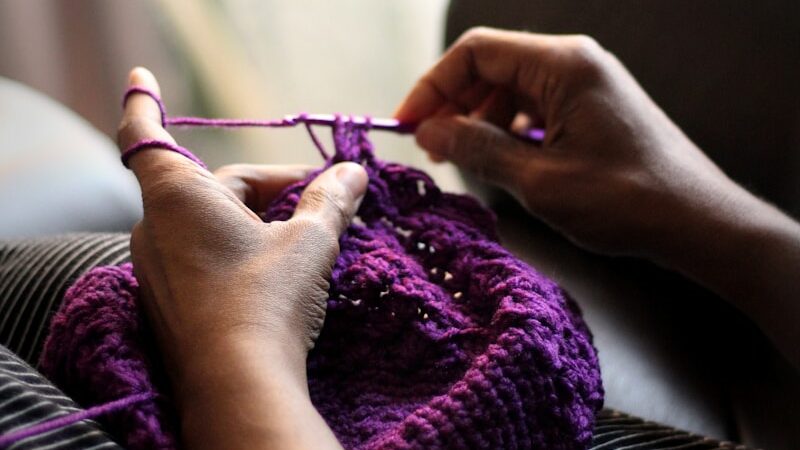
There are two types of hook holds in crochet. The knife hold, and the pencil hold. Depending on which hook hold you use, the way you hold your yarn will differ. For instance, when you are using the knife hold, your hook would be pointed upwards in your dominant hand, while the loose yarn is being held placed over your pointed finger. This will help you maintain the tension of your yarn. The tension of your yarn will dictate how tight or loose your stitches will be as you crochet. There are also many different ways to hold your yarn, so you should experiment to find which way works best for you. For instance, someone who uses the pencil hold for their hook may hold the loose yarn in their non-dominant hand differently. You may also have a different way of holding the hook which isn’t the pencil hold or the knife hold, which is totally okay. Remember to experiment with hook holds and the way you hold your yarn to find the best way to maintain the tension of your stitches so that they aren’t too loose or too tight.
4) Using too Small or Large of a Hook for Your Work
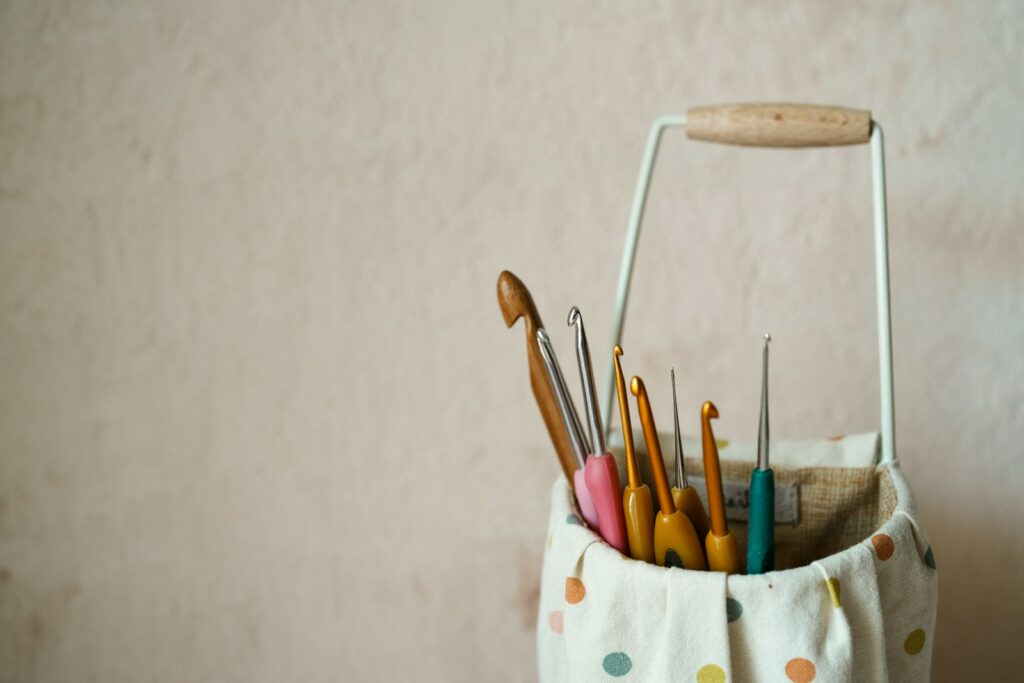
The size of the hook that you use can also affect the size of your stitches, as the loops on your hook that make the crochet stitches will be smaller with a smaller hook than a larger hook. A good way to find which crochet hook size to use would be to check the yarn label on your yarn, or to crochet a chain stitch and to try crocheting a row of stitches as well. This will help you gauge whether or not you are using the right hook size with the right yarn. You don’t want to use a small hook with a thick yarn, as that will make the yarn split or might make the stitches too tight. Likewise, you shouldn’t use a thin yarn with a big hook unless a pattern calls for it, because that would make your project stretchy or have large holes.
5) Miscounting Stitches
This is a mistake that a lot of crocheters make (even the experienced ones!). That’s why it’s okay to rework and recount your stitches, especially when you work on large crochet projects. In order to prevent miscounting stitches, you can consider adding stitch markers to every tenth stitch of your work so that if you happen to forget how many stitches you made as you are counting, you can remember by just counting the number of times you have split your work using stitch markers and by multiplying that number by 10.
6) Mistaking US Stitches for UK Stitches
This is something that I only realized was possible when I was a bit more knowledgeable about crochet. There are two different terms used for basic crochet stitches depending on whether you are using US crochet terms or UK crochet terms. I’ve detailed the different names for each of the basic crochet stitches in the table below.
| US Terms | UK Terms |
|---|---|
| Chain (ch) | Chain (ch) |
| Single Crochet (sc) | Double Crochet (dc) |
| Half Double Crochet (hdc) | Half Treble Crochet (htr) |
| Double Crochet (dc) | Treble Crochet (tr) |
| Treble Crochet (tr) | Double Treble Crochet (dtr) |
Also, if you’d like to learn the basic crochet stitches, I’ve written blog posts about them here:
- How to Crochet A Chain (ch)
- How to Single Crochet (sc)
- How to Half Double Crochet (hdc)
- How to Double Crochet (dc)
- How to Treble Crochet (tr)
The names of these tutorials are written in US crochet terms, but that doesn’t mean that you can’t use them to learn the basic crochet stitches, whether you use US or UK crochet terms.
7) Making everything BLO or FLO
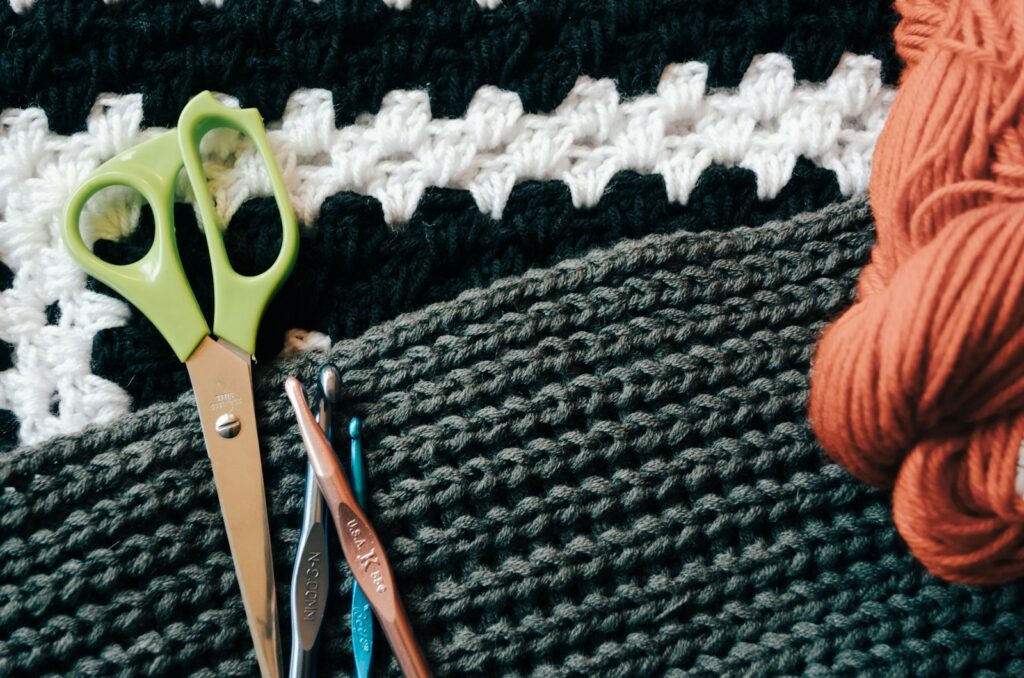
One mistake that is easy to make when you are starting out in your crochet journey is crocheting stitches in only the front loop or back loop of a crochet stitch. To prevent this error from occurring, make sure you crochet through the two bars at the top of any given stitch, which make the v-stitch formation at the top of a row. This means that you aren’t only picking up the front top loop or back top loop of any given stitch, but both of those loops so that you don’t accidentally make a BLO or FLO stitch.
8) Holding Yarn and Hook in One Hand (Not Using One Hand to Maintain Tension)
As mentioned before, make sure that you hold your hook in your dominant hand, while holding your loose yarn in your non-dominant hand so that you can maintain the tension of the stitches that you crochet over the course of your crochet project. This will also help to keep your stitches more uniform, while making it easy for you to work crochet stitches quickly.
9) Trying to Use The Same Exact Yarn a Pattern Calls For
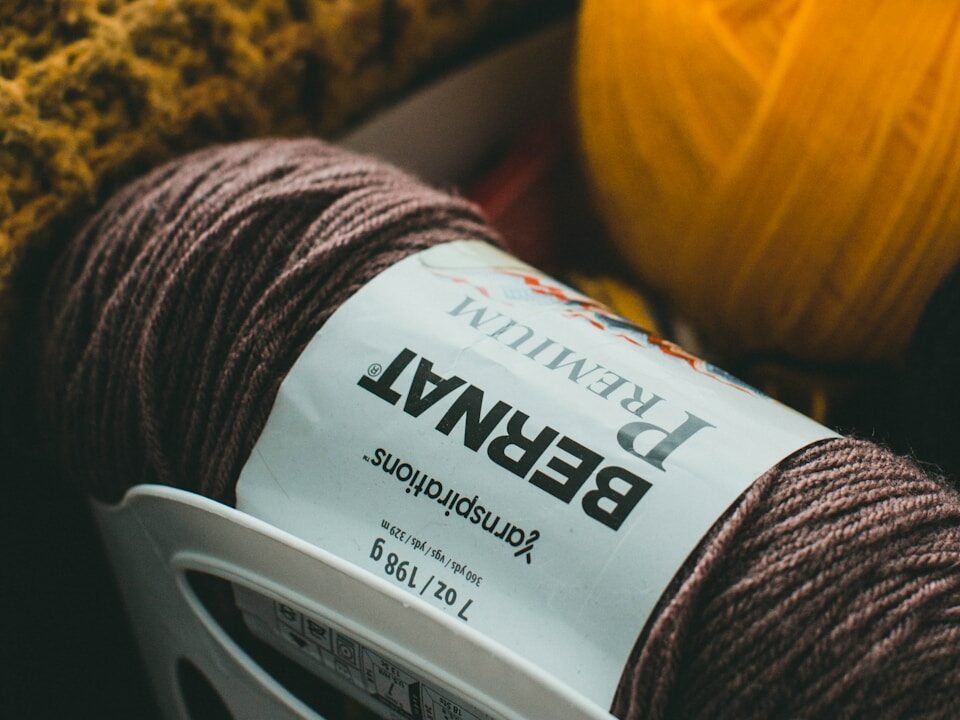
When crocheting a project based on a pattern, you don’t have to use the same exact yarn that is mentioned in the pattern. This is because you may not have the same exact yarn on hand, or you may want to crochet the same project using a different yarn. If this is the case, you can crochet the same project by creating a square swatch, also known as a gauge. You can crochet a gauge by first crocheting the swatch mentioned in the pattern with the recommended hook and the yarn that you have on yarn. Then, if the measurements of that swatch doesn’t match the measurements stated in the pattern, you can make another swatch with a smaller or larger hook, depending on whether or not the swatch is smaller or bigger than mentioned in the pattern. Then you can crochet the same pattern while using the hook that matched the measurements most closely to the swatch/gauge.
10) Using Different Dye Lots
When crocheting a large project, it is possible that you run out of yarn and have to buy more of the same color. Although you may purchase the same yarn color, it may be slightly different from the yarn that you used in your project. This is why it is recommended to buy yarn after comparing it in person, although using the same yarn that is slightly different in color may not be noticeable anyway. This isn’t so much as a mistake as it is a matter of personal preference and whether or not you really think the difference is noticeable. Using slightly different colored yarn may also give a crochet project more character, so don’t sweat it if you can’t find the same exact shade of yarn that you need.
Conclusion
I hope this blog post gave some insights into which mistakes you may encounter as you crochet. When you do encounter them and feel frustrated when learning to crochet, make sure to take breaks and come back to your work, as that will help you in persisting when faced with difficulties in your crochet journey. Happy Crocheting!

Leave a Reply